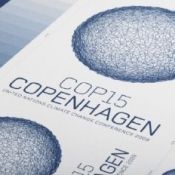REDD Deal Close, but Where’s the Money?
REDD negotiators were called back to Copenhagen’s Bella Center at 10:30pm local time (9:30pm GMT) Wednesday evening to work on the text before handing it over to high-level negotiators on Thursday after a frustrating day that left most members of NGOs locked out for the rest of the talks. The latest text reveals widespread agreement on the idea of paying to reduce greenhouse gas emissions from deforestation and forest degradation, but little agreement over how to pay for it.

16 December 2009 | With just two days of high-level negotiations left before the Copenhagen COP wraps up on Friday, negotiators have reached consensus on the need to reduce greenhouse gas emissions from deforestation and forest degradation (REDD). The latest negotiating text (see “15 December REDD Text”, right), however, leaves it up to the ministers and presidents who pick it up from here to determine who is going to come up with the money to make it worthwhile for developing countries to forego the financial benefits of harvesting their forests and also policing their forests to keep them intact.
That may change by Thursday, because negotiators were called back to the Bella Center late Wednesday evening. It’s possible that high-level negotiators have given their front-line troops more room to maneuver, which would mean a more concrete text tomorrow, but that is pure speculation.
Negotiating texts are full of concrete and conditional proposals. The concrete texts – the bits that all negotiators are authorized to agree on – are simply written in normal text, while the conditional text – the bits that some parties like and others don’t – go out in brackets. The submissions are usually delivered in writing, and earlier drafts of the negotiating text ran over 20 pages. They were whittled down to three thanks to an amazing diplomatic effort by Tony La Vií±a, who is overseeing the portion of the text dealing with REDD.
He talked to parties one-on-one and in small clusters, ultimately managing to distill the perceived areas of disagreement down to the real ones. That yielded the three-page text that was issued earlier this week, and the four-page text that was agreed to on Tuesday and officially posted on Wednesday.
This text implies the creation of a global infrastructure for making direct payments to forest custodians to ensure the preservation of the rainforests, but falls short of spelling that apparatus out. It shows agreement in principle, for example, on the establishment of a fund or facility for building up facilities in developing countries for monitoring the amount of carbon captured in trees (“capacity building”), but then gets gooey in the parts that talk about creating market-based mechanisms to pay for the long-term policing of the rainforest to prevent illegal logging or to compensate locals for not turning their forests into farms.
These costs, of course, are the essence of REDD: for the goal is to recognize the fact that tropical rainforests are worth more alive than dead, and to pay people who live in them to become providers of ecosystem services rather than providers of timber, soybeans, palm oil, or beef.
One bracketed bit of text refers to “private-sector financing” and “innovative sources of funding” to “supplement the provision of public financial resources”, but beyond that, there isn’t much foundation upon which to build a true global REDD regime.
There is still no mention of targets for reducing deforestation. That, you may recall, was removed after developing countries balked at being given a target without an accompanying financial incentive for achieving it.
Word is that’s what brought the negotiators back to the table. If that’s the case, we hope that ministers from both developed and developing countries gave their front-line negotiatorys more leeway to craft a more explicit draft. If not, then it’s up to high-level negotiators to deal with this sticky issue.
Many of these high-level negotiators and heads of state – including US President Barack Obama – have openly expressed support for REDD. We’ll soon know if they’re willing to put our money where their mouths have been.
Additional resources
Please see our Reprint Guidelines for details on republishing our articles.

